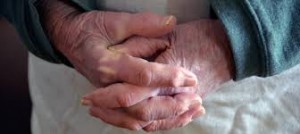 The New York Times shared that e’ve all been there: after ages trying, you finally find a workout that’s actually doable, somewhat enjoyable and totally fits into your schedule and lifestyle. Score. But if you’re still looking for that ideal routine, high-intensity interval training may be your answer.
The New York Times shared that e’ve all been there: after ages trying, you finally find a workout that’s actually doable, somewhat enjoyable and totally fits into your schedule and lifestyle. Score. But if you’re still looking for that ideal routine, high-intensity interval training may be your answer.
According to a recent study published in PLOS ONE, researchers found HIIT which involves relatively brief bursts of vigorous exercise separated by periods of recovery, was more enjoyable when compared to continuous, moderate forms of exercise, making it more likely people would stay the course long-term. For the small study, participants tried three different workouts on a stationary bike: riding 40 minutes at a continuous moderate-intensity, riding 20 minutes at a vigorous-intensity and riding for 20 minutes, alternating between one-minute of all-out effort and one-minute of recovery. The highest ranked in terms of enjoyment was the HIIT session.
This may be because mixing intense bursts of activity with recovery intervals helps break up the monotony of continuous, steady-state workouts while also helping to reduce the total amount of training time needed. Of course it’s important to note that just because it’s enjoyed, doesn’t mean it’s easy.
The bottom line is that if you like what you’re doing, whether that’s dancing or running marathons, you’ll do it regularly—and you’ll be healthier as a result.
*











